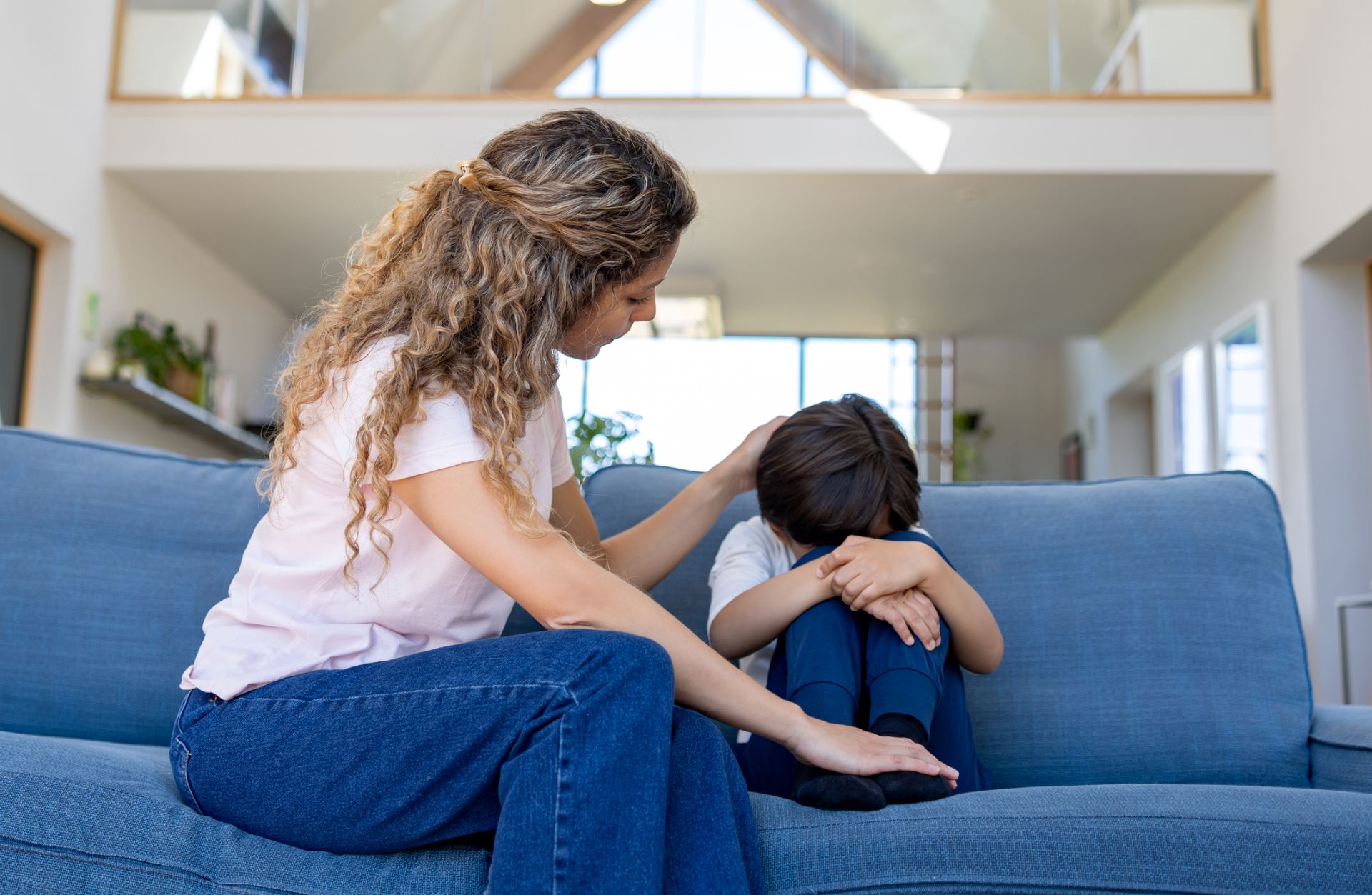
Reparing with your child is important but listen, before we dig deeper, let’s talk about rage. If you’ve raged, screamed, shouted, or yelled at your child, you’re one of millions. Parents do it every day, you’re not a bad parent. Now let’s get to it...
Repairing is the process by which you reconnect with your child after you’ve screamed at them (or they’ve screamed at you). We all need to do it, but there are ways to do it that can help you both understand each other more clearly, with less hurt and confusion. So whether you’re constantly yelling at your child to listen, about to suffer from parental burnout, or have a bad case of mum guilt, here’s what you need to know.
Three experts who are amazing at explaining repair and why it's important are Dr Becky at Good Inside, Dr Martha Deiros Collado and Mr Chazz’s Parenting & Teaching Podcast
“It’s the single most important parenting strategy,” says Dr Becky Kennedy, a clinical psychologist, author of Good Inside and mum of three. “At its core, repair is about reconnecting with a kid after disconnection. By bringing our safe, compassionate self to our children following a moment when we lost our temper, we change how that memory gets stored in their bodies.” In this article, we’ll show you how to repair with your kids and explain why it’s so important, with help from the experts.
How to repair with kids - four simple steps
The first thing to remember about repairing is that it’s not just an apology, according to Dr Becky. She reminds us that an apology looks to shut down the conversation and move on while repairing opens up a conversation.
“All parents yell,” says Dr Becky in her TED Talk on repairing. “But no one knows what to do next.” If you find yourself at a loss on how to repair with your child, here are four easy steps to follow:

Step 1: Mess up
Yep, that’s right! Without messing up, you can’t repair and model what responsible behaviour looks like to your child. So there’s no reason to go out of your way to avoid screaming, shouting or snapping at your child. The key is to focus on what you do after the event.
If this sounds like a licence to shout and scream, it’s not. Instead, it’s a realistic picture of what happens when we’re parents, with all the daily pressures and stresses we face. And even more importantly, the more you go through the repair process, the less you’ll scream and shout because the process helps you become more self-aware of your emotions and behaviours. Over time, this will inevitably reduce how often you lose control.
Step 2: Repair with yourself
You’ve just lost it with your kid and screamed or shouted at them. Or maybe you’ve snapped at them and seen their little face crumpling as they run away from you. Now you’re feeling all the guilt and shame that comes with this.
Instead of criticising yourself after shouting or snapping at your child, take a moment to find compassion for yourself. “Separating who you are from your behaviour doesn’t let you off the hook, according to Dr Becky. Instead, it helps you direct your energy towards what you want to do differently.
Step 3: Acknowledge your behaviour and apologise
This can feel uncomfortable, especially if we were never apologised to by adults as a child. Open the conversation by saying, “I keep thinking about when I screamed, shouted or snapped at you. I’m sure that felt scary. Do you have some time to talk about it?”
Let your child know that it wasn’t their fault and that you are working on trying to stay calm, even when you feel frustrated. This helps to stop your child from blaming themselves for what happened.
“Acknowledge any mistakes you made and how you’ll try to do better in the future,” says neuropsychologist Dr Judy Ho Gavazza. “Be specific about anything you wish you didn’t do during the conflict and specific ways you’ll try to prevent these behaviours in the future.”
Dr Becky suggests not going down the road of making it a learning lesson for your kid. So (hard as this will be for most of us!) try not to say, “I shouted because you weren’t listening/you were grumpy/you hadn’t tidied your room.” It simply passes the blame back to your child.

Step 4: Let them know you love them
Whether it’s a cuddle, a kiss or a simple "I love you”, reset with your child by letting them know you care." Affirm your love to them, and check in if there's anything they need," says Dr Scott Lyons, a psychologist, educator and author. "If it feels possible and doesn't feel forced, offer some physical connection like a hug or kiss."
Five reasons why repairing is so important, according to the experts
1. Creates trust
When you take the time to genuinely repair a rupture with your child after losing your temper, it shows them that the relationship is strong enough to withstand conflict. Your child will feel reassured that they can trust you to hear them, take responsibility, and reconnect even if things get complicated. This helps them feel secure and builds up their resilience.
2. Allows you to be more self-aware
The repair process requires reflecting on your reactions and emotions that may have caused damage. This self-analysis enhances awareness of your triggers so you can better regulate yourself in the future to avoid losing your temper as often. “Repairing lets you analyse your emotions and how they impact your actions,” says De Los Santos. “It will also help you reflect on how your actions and emotions affect others, especially your children.”
3. Models responsible behaviour
Apologising after losing your cool shows you're accountable for your actions. It teaches your child how to take ownership of mistakes rather than denying any blame.
4. Shows your child how to regulate emotions
By seeing you manage big and complex emotions like anger, shame, and remorse, your little one learns healthy techniques for calming themselves down, expressing their feelings, apologising and moving forward.
5. Reassures your kid they're not the problem
When parents lose their temper, children often blame themselves, but repair can help undo some of that damage. “It lets a child know they are not the problem, that no matter what happens, they have a stable base - you - that they can return to, " says Lyons. This helps them feel safe and secure in the world and gives them the confidence to handle life’s ups and downs.
Am I using repair as an excuse to shout and scream?
The answer to this depends on how often you lose your temper with your child and why. If you find yourself repairing every day or multiple times a week, experts suggest it may be time to consider why you’re losing your cool so often.
“An important thing in repairing is that parents should be aware that it is not always the solution to their strong reactions,” says clinical psychologist Aura De Los Santos. “So if you have the same reaction several times, it’s time to reflect and take action to avoid it.”

But do give yourself a break if you can. The fact that you’re wondering whether you use it too much shows that you care deeply about your relationship with your child.
“It’s impossible to be a perfect parent all the time," reassures Dr Lyons. “We’re looking for good enough and safe enough parenting. We’re all put in positions where losing our temper is possible. What’s important is to make sure it isn’t happening too frequently or becoming a pattern. If you feel like you’re losing your temper regularly with your child, I’d recommend discussing this with a therapist or psychologist to talk through what's happening for you, how you can increase your resilience and get more resources of support for yourself.”
Our expert panel
Get more expert advice on being a reflective parent, from simple parenting mantras to help you think before you act to how to communicate with a child who won’t listen. Plus, here are eight expert tips for teaching kids emotional intelligence.







